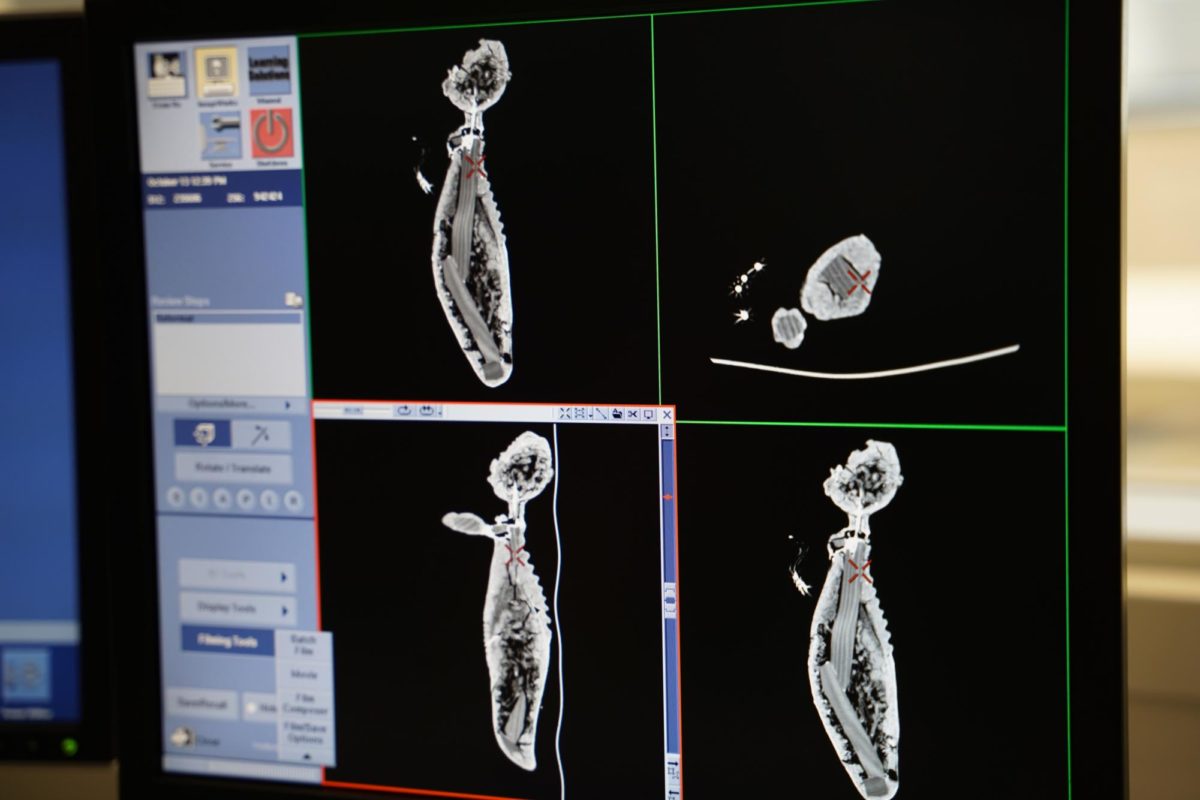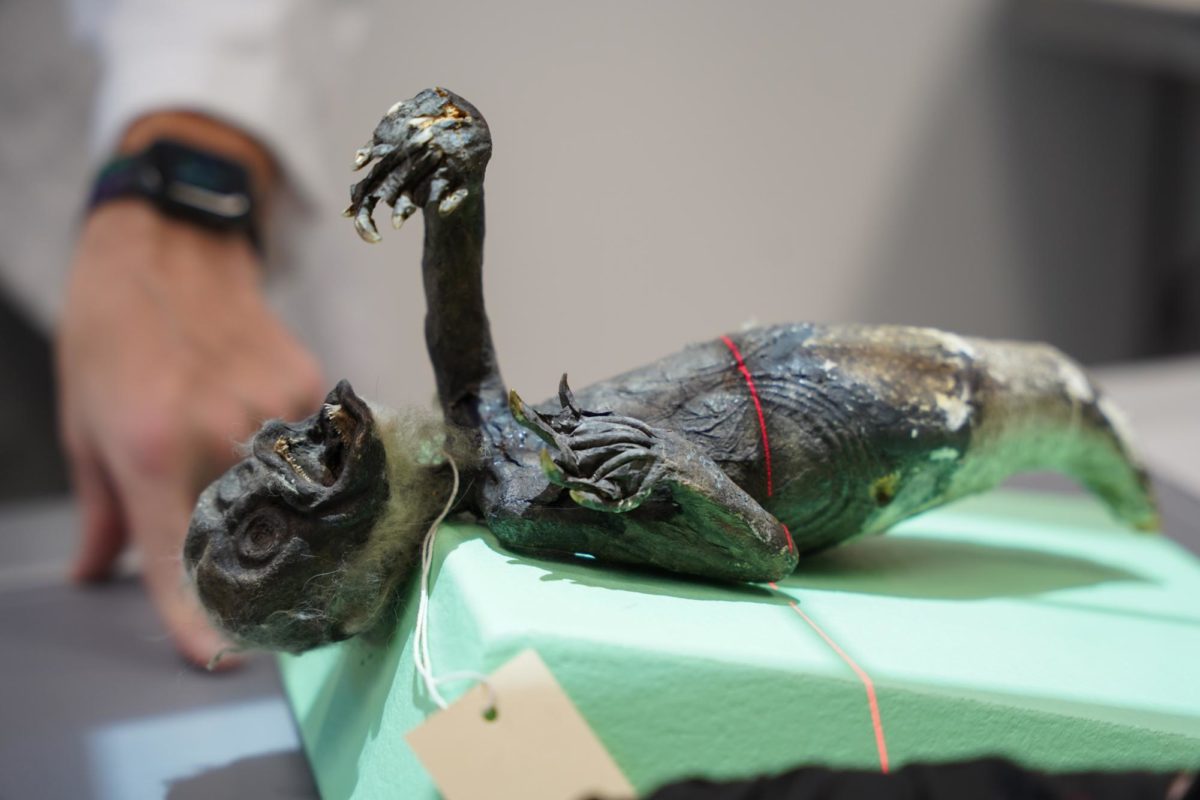On Oct. 13 in the Health Innovation Center’s radiology lab, NKU students performed scans on a mermaid.
The specimen does not resemble the popular half-human, half-fish conception of a mermaid, however. It is dark brown, skinny and shriveled, small enough to fit into a shoebox. The Clark County Historical Society made the trek from Springfield, Ohio to Northern Kentucky University to determine what the specimen, known as a Fiji or Feejee mermaid, is made of.
Throughout the 19th century the Fiji mermaid was a popular sideshow piece, drawing spectators who were intrigued by the curious and the strange. The infamous showman P. T. Barnum exhibited the original specimen—which an American sea captain had purchased from a Japanese fisherman—in his museum in 1842, but the specimen subsequently disappeared.
Other versions of the mermaid would show up in the following decades with varying styles of compositions. Some were taxidermies of monkeys and fish sewn together, others were constructed entirely out of papier-mâché.
According to Natalie Fritz, Clark County Historical Society’s archivist and outreach director, their specimen was originally acquired by a Navy sailor in Japan during the 1870s and later donated to the county’s Heritage Center in 1906. The mermaid has been on display in the museum’s Cabinet of Curiosities since 2003, but it was recently taken down as the historical society entered a multiyear inventory project that has unearthed many curiosities not yet unveiled to the public, such as items connected to George Washington, Abraham Lincoln’s signature and supposedly a piece of Noah’s ark.
Aside from the sideshow artifacts, the historical society also tells the story of Springfield and documents the area’s historical growth as the endpoint of Route 40.
NKU associate professor in public history Brian Hackett was in the Dayton area for a program and, as he was aware of the historical society’s possession of the mermaid, contacted them to have the specimen radiologically scanned. He intended to give students a new learning experience, a mystery or challenge far removed from everyday life, Fritz explained.
“He was just fabulous about giving us and students these things to image, to study,” said Jason Applegate, an associate professor in radiologic science who supervised the mermaid scans. Prior to the Fiji mermaid, Hackett arranged to have students scan a mummy from the Cincinnati Museum Center in the spring of 1999.
“I think for his students and for our students, they can both benefit from this,” Applegate added. “Working with archaeology, historical centers can help them determine what they have. X-rays and diagnostic imaging can be used for a lot of things other than medical usage.”

While further tests are needed to conclusively determine what Clark County’s Fiji mermaid is, the X-rays and CT scans revealed that the specimen has a real fish’s lower body, jaws and teeth. It has been taxidermied in a traditional style around a wooden core, meaning dendrochronology analysis of the wood can more accurately pinpoint when the specimen was constructed.
Further opportunities to work with strange specimens are on the horizon, Applegate said. For the students, the scanning was a cool experience.
“It’s not something you see day to day,” said Lynn Heckmuller, a radiologic science senior. “It’s probably a once-in-a-lifetime thing to do.”
Beyond the novelty value, the exercise also challenged students in how they apply their healthcare and scientific knowledge: differentiating between organic and inorganic components, the parts that are living and the parts that are decayed, Heckmuller explained.
“We use the skills we learned throughout the program to scan something not necessarily alive and moveable,” said radiologic science senior Madi Johnson. “It’s neat that we have the technology we can use to figure out things from hundreds of years ago.”


